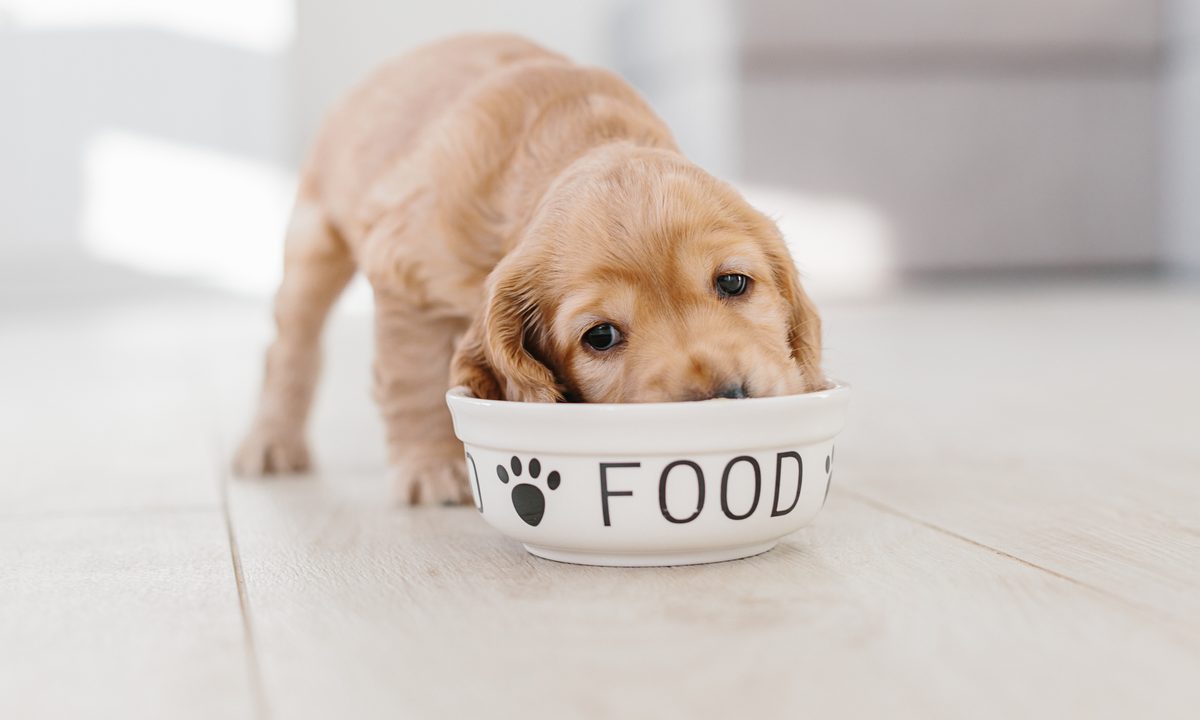Having newborn puppies around can be such a gift, but there’s also a lot of work involved. You need to keep their enclosure clean, make sure they’re fed, and stay on top of their health in a multitude of ways. Luckily, we’re here to help you navigate your new puppies’ feeding routine with a newborn puppy feeding chart.
Whenever possible, newborns should consume their mother’s nutrient-rich milk, which helps protect them from illness while their immune systems develop. It’s the perfect food for them! However, it’s not always possible for a mama dog to feed her litter all by herself.
Perhaps Mom doesn’t produce enough milk, the milk is infected, or the puppies have unfortunately become orphaned. In these scenarios, pet parents have to step in to help feed the babies around the clock. To ensure your pups are getting adequate nutrition, it’s important to follow a newborn puppy feeding chart or guide from a trusted veterinary resource.
How to tell if nursing puppies are getting enough to eat from Mom
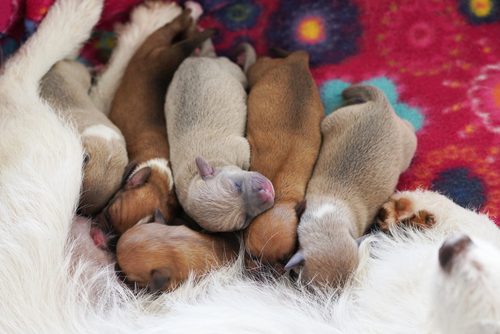
Veterinary experts say that newborn puppies should gain 5% to 10% of their body weight daily — doubling their body weight in their first week. Jerry Klein, the chief veterinary officer at the American Kennel Club (AKC), recommends using a baby scale to monitor the weight gain of each puppy over time. Puppies should first be weighed at birth and again at 12 hours, 24 hours, 48 hours, 3 days, 5 days, and 7 days. If everything is going well, your puppies should gain weight gradually over the course of the first few weeks.
When newborns cry during or after nursing, though, it may very well mean that they aren’t getting enough milk. Alternatively, Mom’s milk could be infected, or it might indicate that they are sick. If this behavior is sudden or excessive, it requires an emergency vet visit for Mom, baby, and littermates.
How often do newborn puppies eat when nursed by Mom?

Newborn puppies typically nurse from their mom about every two hours. As they grow older, the time between nursing increases, and by four or five weeks — or even as early as three — Mom starts weaning her puppies. You’ll have to step in to make up the difference and start introducing some puppy chow “gruel” mixtures to help them transition from milk to solid foods.
How often should you feed a newborn puppy? It depends on their age
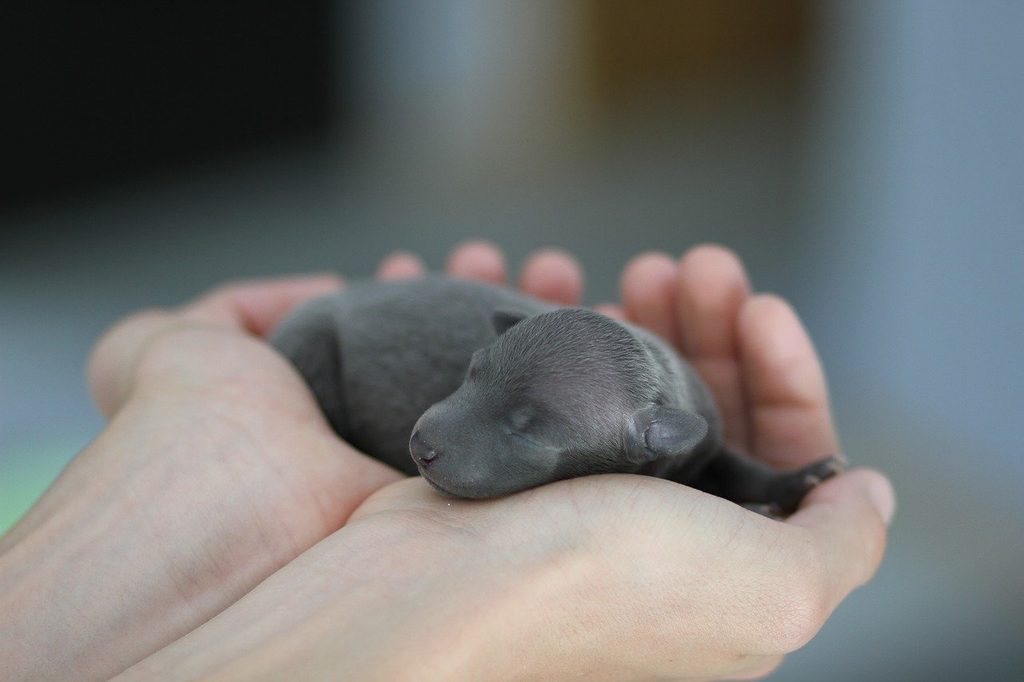
When Mom’s milk supply isn’t adequate to support the healthy growth of her puppies, VCA veterinary experts recommend supplemental feedings one to six times per day. Newborn orphaned puppies who are less than 2 weeks old should be fed every three to four hours, while 2- to 4-week-old puppies will do well being fed every six to eight hours. Don’t forget — feedings need to be equally spaced over the span of 24 hours.
Can you leave newborn puppies alone with their mom overnight?
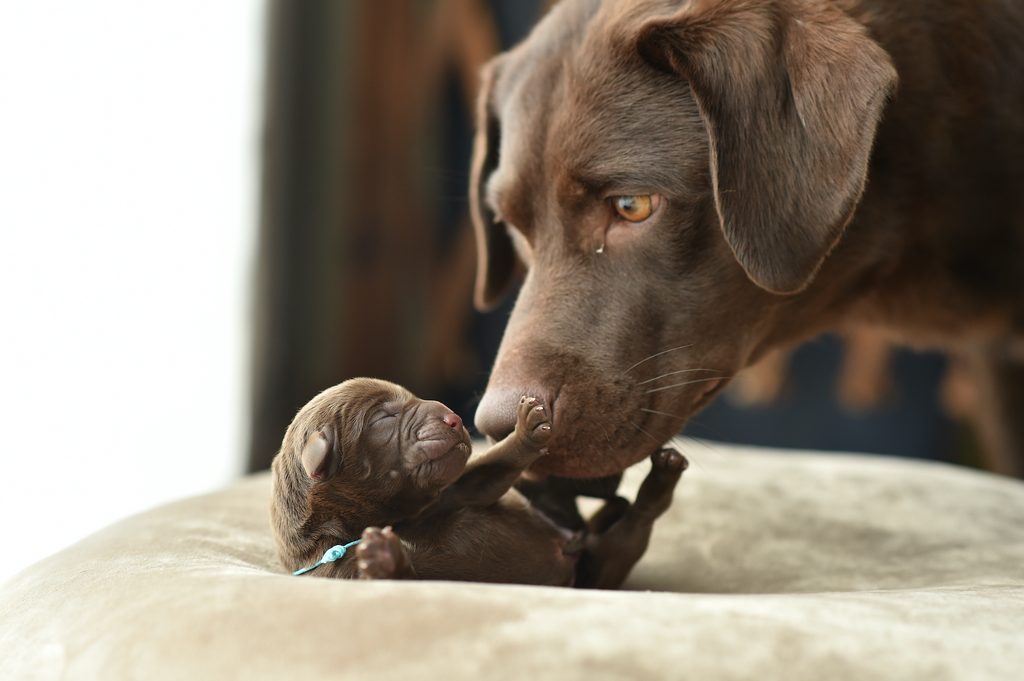
While Mama knows exactly how to take care of her babies, you should not leave them alone for more than about four hours. Especially for a first-time mom or a big litter, she might struggle to do everything by herself (remember, in the wild, wolves live in packs that help with puppy care).
Since there aren’t usually a whole group of dogs to step in as her support system, that will come down to you. For the first few weeks, you should try to sleep nearby, which will allow you to stay alert to anything that might go wrong. Until they hit the six-month mark, you won’t be able to leave them alone for more than six hours.
What to feed newborn puppies without their mom’s support

Veterinarians say that the best replacement milk for puppies is commercial puppy milk formula. Best Friends Animal Society recommends the Esbilac puppy milk replacer when feeding orphaned puppies or those who need extra support. Experts say that any puppy milk replacer should contain optimal levels of omega-3 fatty acid and DHA (docosahexaenoic acid), a nutrient that is important for the development of their brains and eyes. Containers will come with feeding instructions, so be sure to follow these carefully.
Just as with newborn babies, the temperature of the milk can be tested on your forearm before feeding. You want it about the same temperature as your skin or only slightly warmer. Otherwise, they’ll burn their little tongues trying to slurp it down.
As you nourish your newborn, be aware that overfeeding may put your puppy at risk of aspiration, vomiting, diarrhea, and gas build-up in the stomach and intestines. To ensure this doesn’t happen, Maddie’s Fund provides a helpful newborn puppy feeding chart broken down by calorie requirements and formula measurements based on the puppy’s weight.
How to bottle-feed a newborn puppy
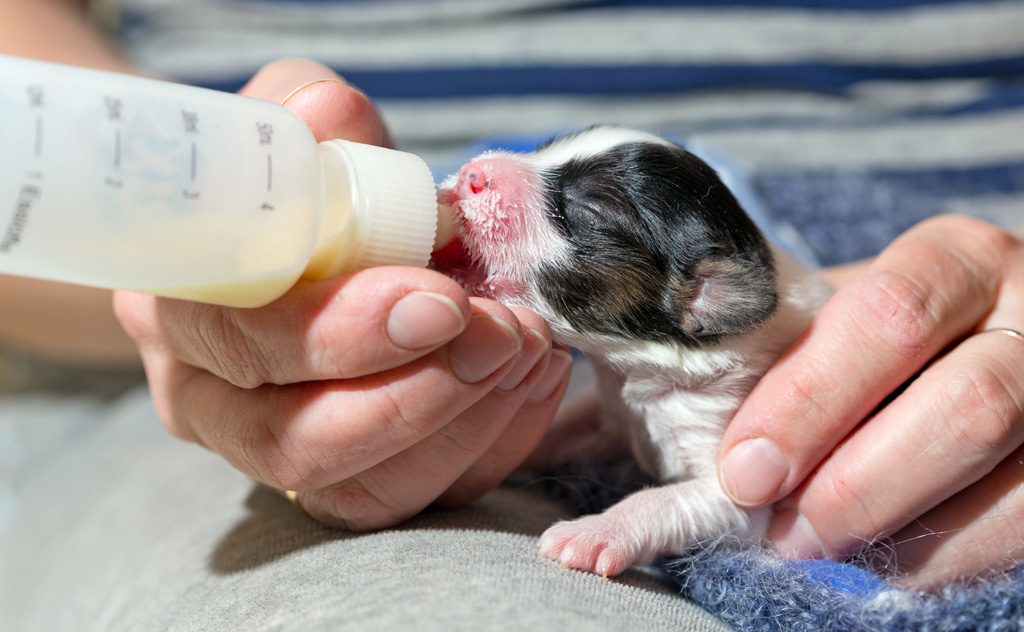
As a new dog mom, you’ll have to get the hang of feeding your little guy, but you both will learn to enjoy it.
- A puppy nursing bottle is the best way to feed your bundle of joy. The size of the hole in the nipple is crucial to successful bottle feeding, according to experts at Best Friends. To check this, turn the bottle upside down and gently squeeze: If the milk drips freely, the hole is too large. That means the puppy could take in too much and risk inhaling it into their lungs. If the hole is too small, the puppy has to work too hard to get nourishment and may refuse to nurse. You’ll know that the hole is the proper size when the milk comes out one drop at a time.
- Puppies shouldn’t be fed on their backs because they don’t have a well-developed gag reflex, and there’s a danger that fluid may go down their windpipe and enter their lungs. Instead, place the puppy on their stomach with their head level as if they were nursing from their mom.
- Open the puppy’s mouth gently with one finger and place the tip of the nipple on their tongue. If the puppy doesn’t eat, try stroking the pup. Tilt the bottle up slightly to prevent your puppy from inhaling too much air. Do not force the puppy to nurse, or allow them to nurse too fast.
- After each feeding, you’ll have to burp them by holding them against your shoulder and gently patting their back.
Some orphan puppies take a little time to get the knack for the sucking part of feeding. If a pup doesn’t drink from the bottle, though, you’ll need to work with a veterinarian to tube feed and get him started.
In addition, for the first two weeks, orphan pups should be stimulated to urinate and defecate after each meal. This is done by rubbing the area between the back legs with a warm, wet cotton ball. This action mimics the licking Mom does to make her puppies go potty.
When do puppies start transitioning to solid food?
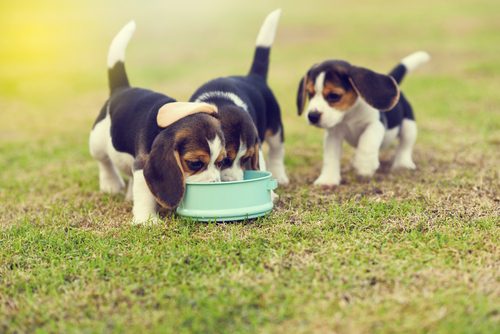
When pups are with their mom, they may start the process of weaning — or transitioning from milk to solid food — as early as 3 to 4 weeks of age. Mom will start to refuse feedings around this time since this is the stage in development when puppies’ teeth start to grow in.
As Jennifer Coates, DVM, explains on PetMD, bottle-fed puppies can also start switching to solids around this time. By 8 to 10 weeks, however, the puppies should be fully weaned. At this time, they’ll be eating puppy food instead of milk replacer.
What do puppies eat while weaning from milk or formula to solid food?
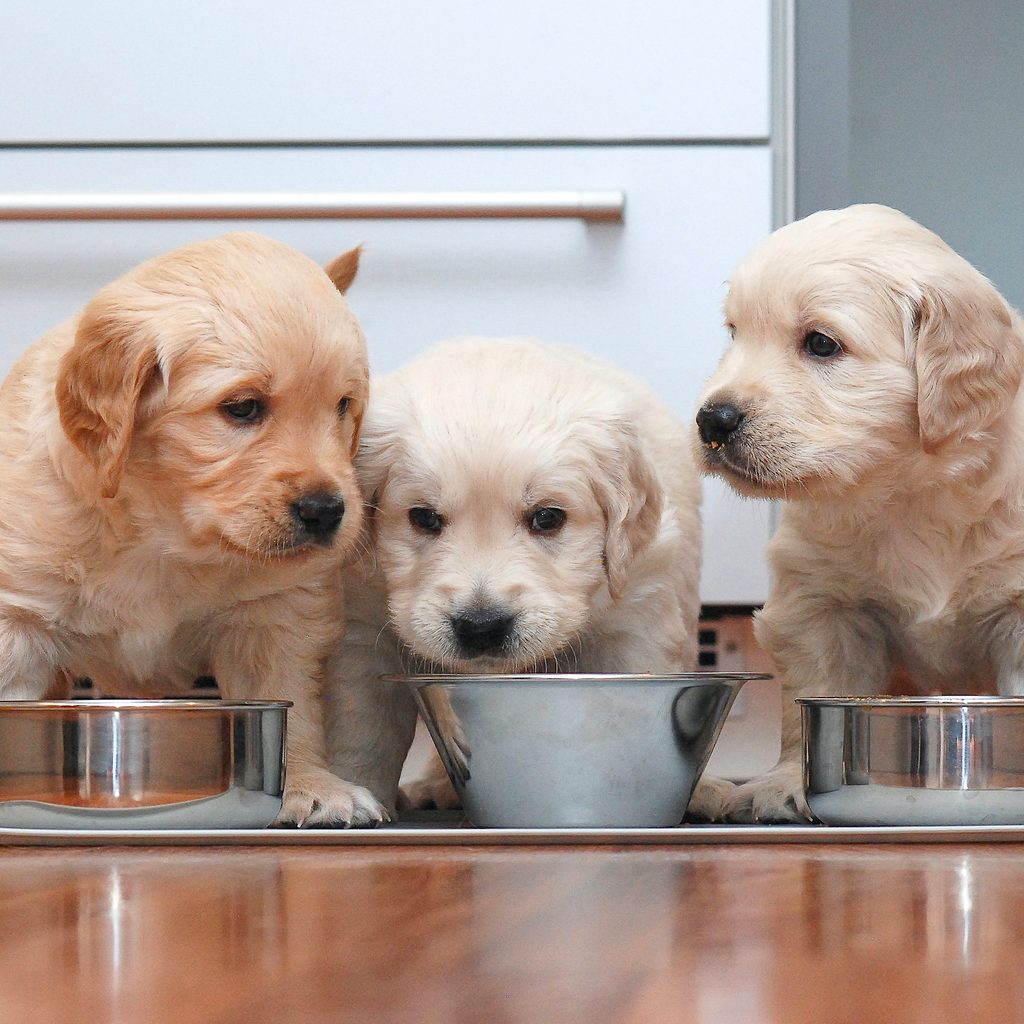
During the few weeks your puppies are weaning, you’ll be making changes to their diet as they adjust. This is crucial to their success, as puppies aren’t born knowing how to lap or eat right away.
You can begin by mixing puppy milk replacer and puppy food to create an easy-to-consume gruel. You’ll want to offer this mixture to the pups while they’re separated from Mom to minimize any distraction or confusion. Still, you will need to dip a finger in the food and touch their noses with it at first to help them get used to the licking — or lapping — motion of their tongue. They’ll lick the food off of their face and ideally become interested in the gruel sitting in front of them. It may take a few days for pups to get the hang of this, but they’ll be lapping up their meals before you know it!
After they’ve mastered that stage, you’ll want to use less milk replacer in the puppy food over time. This way, their food will get slightly more solid with each meal, and they’ll get the chance to practice chewing motions. By the 8 -10 week mark, puppies should be eating exclusively puppy food, though wet food or watered-down puppy kibble are always options for those who are still getting the hang of eating.
While caring for newborns is certainly a time-consuming job and a lot of work, it’s also incredibly rewarding for any dog owner. Nothing will bring you more joy and satisfaction than watching those fur babies thriving under your loving care. If Mom is in the picture, she’ll be so grateful, too!
